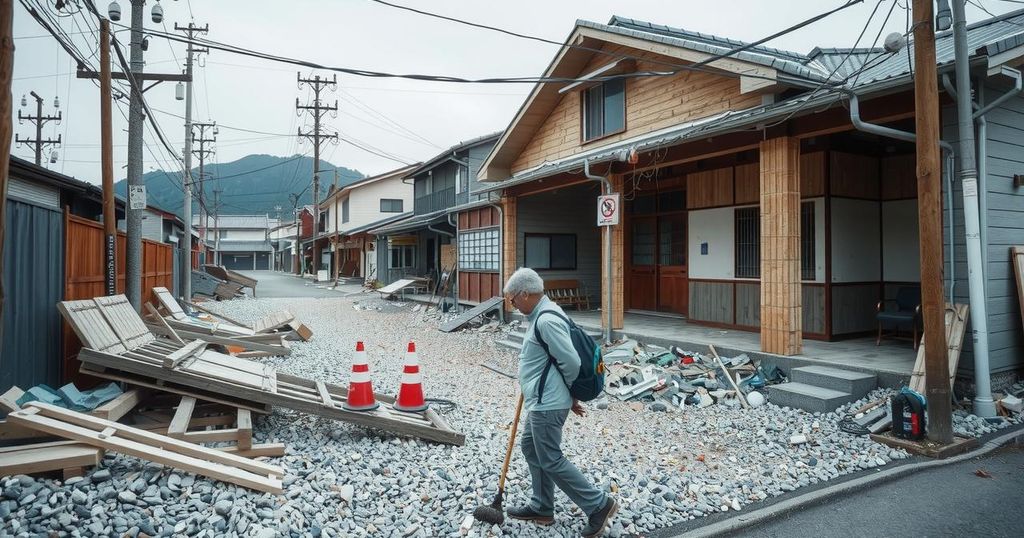The recent earthquake in Ishikawa Prefecture, Japan, has resulted in a rising death toll, anticipated to exceed 500 as over 200 pending cases await recognition as disaster-related deaths. Many victims relate to post-disaster conditions such as evacuation centers, with a significant portion of the deceased being elderly. Processing delays for death recognition claims further complicate recovery efforts.
In the wake of the devastating earthquake that struck Ishikawa Prefecture and its vicinity on New Year’s Day of 2024, officials anticipate a significant increase in reported fatalities associated with the disaster. As municipalities have indicated, over 200 death cases are currently pending recognition as earthquake-related. Following the magnitude-7.6 earthquake, the death toll has already surpassed 500, with a considerable proportion of these deaths occurring in evacuation centers and attributed to the aftermath of the quake.
The violence of the earthquake claimed approximately 230 lives during the initial impact, including individuals trapped under rubble. However, the pending 200 cases have not yet undergone the necessary application process to be classified as disaster-related deaths. The acknowledgment of these deaths is crucial, as it entitles bereaved families to compensation of up to 5 million yen (approximately $32,000) under disaster condolence grant legislation.
Recent data suggests that among the roughly 270 certified post-quake fatalities in Ishikawa, approximately 20 percent occurred three months or more after the incident. The majority of these victims were elderly, aged 70 and above. Notably, a report of disclosed factors contributing to these deaths highlighted “distress after the earthquake and fear of aftershocks” as the predominant cause, cited in 89 cases. This was followed by difficulties stemming from cut lifelines, such as water and electricity outages, and challenges faced during life in evacuation centers, reported in 53 and 37 cases, respectively. Additionally, other prefectures, such as Niigata and Toyama, have also recognized a few post-disaster deaths.
Currently, municipalities are processing no more than 20 applications per month, which has resulted in a backlog of cases awaiting review. As these communities navigate the extensive recovery process, many residents continue to grapple with the emotional and physical toll inflicted by the earthquake.
On January 1, 2024, Ishikawa Prefecture in Japan experienced a powerful earthquake measuring 7.6 on the Richter scale. This seismic event led to widespread devastation, particularly affecting the Noto Peninsula, an area that had already experienced significant damage from a previous earthquake a year prior. With reports indicating more than 500 fatalities to date, many of these deaths are connected not directly to the earthquake’s immediate impact but to the aftermath, including conditions in evacuation centers and physical distress caused by fear of aftershocks and disrupted services.
In conclusion, the ongoing review of death cases linked to the recent earthquake in Ishikawa Prefecture underscores the profound and prolonged impact of such disasters on communities. As local authorities differ in their ability to process applications for post-disaster death recognition, the backlog reflects the complexities involved in handling the aftermath of such catastrophic events. Continued support for bereaved families and proper acknowledgment of disaster-related deaths remain essential for recovery efforts in the affected regions.
Original Source: english.kyodonews.net






